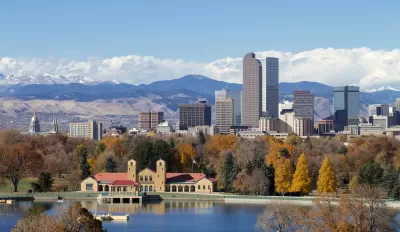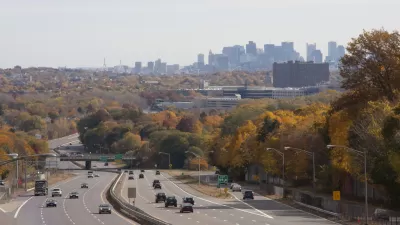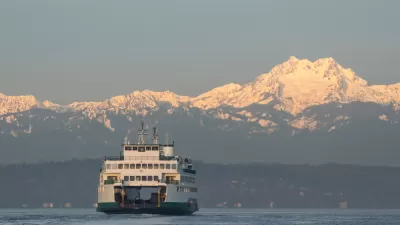A favorite in Europe but rare in the United States, urban growth boundaries are intended to keep cities compact and hinterlands green. The few American cities with UGB's are trying to figuring out how to use them effectively.

The idea of an urban growth boundary (UGB) is simple: draw a line around a city, restrict development outside that line, and promote development inside that line. Cities grow more compact, and the outlying areas, whether they are used for agriculture or conservation, remain open and green. Simple as it is, some UGB's aren't worth the paper they're drawn on.
A session at the recent American Planning Association conference in Seattle analyzed the implementation of UGB's in three American cities: Portland, Oregon; King County (Seattle), Washington; and Denver, Colorado. Panelists agreed that the success of a UGB depends not on simply drawing a line but rather on sustained political support for the boundary and for the development patterns needed to complement the boundary. In some cities, weak political support leads to changing boundaries and renegotiations that render UGB's almost useless.
Some highlights:
- Portland: Since the UGB was created in 1979, "the population of Portland has grown 60 percent, while the urban growth boundary has expanded just 14 percent." Despite an expected addition of 200,000 homes to the area by 2035, the city does not currently expect to expand its boundary.
- King County: "In 1990, there was a bipartisan agreement that led to the growth management act, which down-zoned two-thirds of the county from development areas to rural land, agriculture, and forests....98 percent of growth has been in the urban growth boundary." Rural landowners can transfer development rights to cities (but not vice-versa) to further encourage growth within the boundary.
- Denver: The UGB of the Denver area has grown from encompassing 750 to 921 square miles since its inception in 1997. Cities "self-certify" their participation in the UGB plan, meaning that it relies on "peer pressure" to promote compact development.
FULL STORY: Do Urban Growth Boundaries Work?

Alabama: Trump Terminates Settlements for Black Communities Harmed By Raw Sewage
Trump deemed the landmark civil rights agreement “illegal DEI and environmental justice policy.”

Study: Maui’s Plan to Convert Vacation Rentals to Long-Term Housing Could Cause Nearly $1 Billion Economic Loss
The plan would reduce visitor accommodation by 25% resulting in 1,900 jobs lost.

Planetizen Federal Action Tracker
A weekly monitor of how Trump’s orders and actions are impacting planners and planning in America.

Wind Energy on the Rise Despite Federal Policy Reversal
The Trump administration is revoking federal support for renewable energy, but demand for new projects continues unabated.

Passengers Flock to Caltrain After Electrification
The new electric trains are running faster and more reliably, leading to strong ridership growth on the Bay Area rail system.

Texas Churches Rally Behind ‘Yes in God’s Back Yard’ Legislation
Religious leaders want the state to reduce zoning regulations to streamline leasing church-owned land to housing developers.
Urban Design for Planners 1: Software Tools
This six-course series explores essential urban design concepts using open source software and equips planners with the tools they need to participate fully in the urban design process.
Planning for Universal Design
Learn the tools for implementing Universal Design in planning regulations.
Caltrans
Smith Gee Studio
Institute for Housing and Urban Development Studies (IHS)
City of Grandview
Harvard GSD Executive Education
Toledo-Lucas County Plan Commissions
Salt Lake City
NYU Wagner Graduate School of Public Service




























